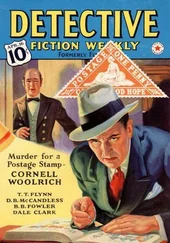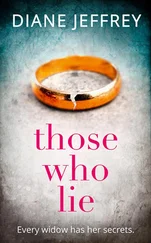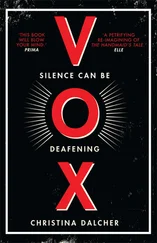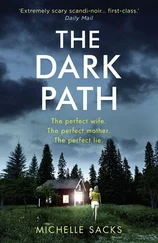In height he was rather over six feet, and so excessively lean that he seemed to be considerably taller. His eyes were sharp and piercing, save during those intervals of torpor to which I have alluded; and his thin hawk-like nose gave his whole expression an air of alertness and decision. His chin, too, had the prominence and squareness which mark the man of determination. His hands were invariably blotted with ink and stained with chemicals, yet he was possessed of extraordinary delicacy of touch, as I frequently had occasion to observe when I watched him manipulating his fragile philosophical instruments.
And it is in A Study in Scarlet that Holmes himself gives proof of his deductive powers.
“There has been murder done, and the murderer was a man. He was more than six feet high, was in the prime of life, had small feet for his height, wore coarse, square-toed boots and smoked a Trichinopoly cigar. He came here with his victim in a four-wheeled cab, which was drawn by a horse with three old shoes and one new one on his off foreleg. In all probability the murderer had a florid face, and the fingernails of his right hand were remarkably long. These are only a few indications but they may assist you.”
Lestrade and Gregson glanced at each other with an incredulous smile.
“If this man was murdered, how was it done?” asked the former.
“Poison,” said Sherlock Holmes curtly, and strode off.
Despite the amount of detailed information about Holmes and his habits provided by Watson in the short stories, the core of the man remains elusive. He is obviously clever with a practical, rational, non-threatening intelligence, patriotic, compassionate, resourceful and brave-qualities which mirror those of his creator. This is not surprising, since writers who create a serial character inevitably endow him or her with their own interests and preoccupations. Conan Doyle admitted that “a man cannot spin a character out of his own inner consciousness and make it really life-like unless he has some possibilities of that character within him.” Even so, I would have expected him to have been more attached to the valiant Dr. Watson, wounded hero of the second Afghan war, than to this unsentimental, neurotic and cocaine-injecting genius of deduction. Holmes is a violinist, so he is not without a cultural interest, but we are probably unwise to accept Watson’s partial view of the measure of his talent. Although the call to a new case provokes in Holmes a surge of enthusiasm and physical and mental energy, he has a doubting and pessimistic streak, and more than a touch of modern cynicism. “What you do in this world is a matter of no consequence. The question is, what you can make people believe you have done” ( A Study in Scarlet ). “We reach. We grasp. And what is left in our hands at the end? A shadow. Or worse than a shadow-misery” (“The Adventure of the Retired Colourman”). In this too Holmes could be reflecting a dichotomy in his own character, and indeed one aspect of Victorian sensibility. He is of his age but, curiously, also of ours, and this too may be part of the secret of his lasting appeal. The inspiration for Sherlock Holmes was Dr. Joseph Bell, a consultant surgeon at the Edinburgh Royal Infirmary whose reputation as a brilliant diagnostician was based on his ability to observe closely and interpret the apparently insignificant facts presented by the appearance and habits of his patients. Conan Doyle also acknowledged the influence of Edgar Allan Poe, who was born in 1809 and died in 1849, and whose detective, Chevalier C. Auguste Dupin, was the first fictional investigator to rely primarily on deduction from observable facts. Many critics would argue that the main credit for inventing the detective story and influencing its development should be shared by Conan Doyle and Poe. Poe is chiefly remembered for his tales of the macabre, but in four short stories alone he introduced what were to become the stock plot devices of early detective stories. “The Murders in the Rue Morgue” (1841) is a locked-room mystery. In “The Mystery of Marie Rogêt” (1842) the detective solves the crime from newspaper cuttings and press reports, making this the first example of armchair detection. In “The Purloined Letter” (1844) we have an example of the perpetrator being the most unlikely suspect, a ploy which was to become common with Agatha Christie and in danger of becoming a cliché, so that readers whose main interest in the story was to correctly identify the murderer had only to fix on the least likely suspect to be sure of success. “The Gold-Bug” makes use of cryptography in solving the crime; so too did Dorothy L. Sayers, both in Have His Carcase and in The Nine Tailors . Poe did not describe himself as a detective writer, but both he and his hero, C. Auguste Dupin, have their rightful importance in the history of the genre, although Dupin cannot challenge the dominance of Sherlock Holmes and has little in common with Holmes except for their deductive skills. Sherlock Holmes remains unique. We may not feel personally drawn to his eccentricities, but generations have entered into his world and have shared the excitement, entertainment and pure reading pleasure of his adventures. Conan Doyle was a superb storyteller, the Sherlock Holmes canon is still in print and the stories are being read by new generations nearly eighty years after Conan Doyle’s death.
No writer who achieves spectacular success does so without a modicum of good luck. For Conan Doyle this occurred when he was invited to contribute a series of self-contained short stories for Strand Magazine , founded by George Newnes in 1891. The Strand broke new ground, attracting readers with such innovations as interviews with celebrities, general articles, photographs and free gifts, foreshadowing the popular magazines which were to prosper in the next century. With a readership of over 300,000 it provided Conan Doyle with a double bonus: not only could he be assured of a huge and growing public, but he was now able to concentrate on short stories, the form which suited him best. Today such good fortune could only be equated to a long-running major television series. This too, posthumously, he gained. To add to his wide exposure during his author’s lifetime, the exploits of Sherlock Holmes have been a gift to radio, television and film, and millions of viewers have thrilled to The Hound of the Baskervilles who have never read the novel. His success was also helped by the talent of his illustrator, Sidney Paget, who created Holmes’s handsome but sternly auth oritative features and clothed him in the deer stalker hat and caped coat, a picture which has formed the mental image of the great detective for generations.
Conan Doyle also had the good fortune to publish when his own character, his literary talent and his hero met the needs and expectations of his age. The Sherlock Holmes saga provided for an increasingly literate society and the emergence of an upper working and middle class with leisure to read who welcomed stories which were original, accessible, exciting and with that occasional frisson of horror to which the Victorians were never averse. Conan Doyle was himself a representative of his sex and class. He was a man his fellow countrymen could understand: a stalwart imperialist, patriotic, courageous, resourceful and with the self-confidence to congratulate himself on having “the strongest influence over young men, especially young athletic sporting men, than anyone in England, bar Kipling.” But his most attractive characteristic was undoubtedly his passion for justice, and he was indefatigable in spending time, money and energy in righting injustices wherever they came to light. He imbued Sherlock Holmes with the same passion, the same courage.
Читать дальше












